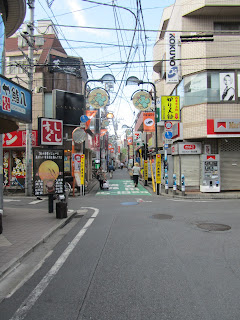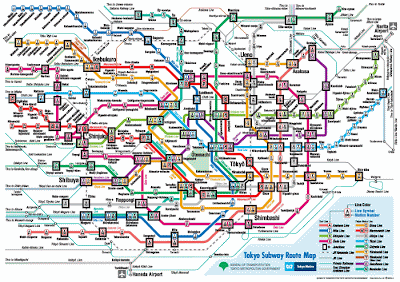Anyway, Muramatsu-san, a little 55(ish) year old woman, was my first host. She lived about 3 minutes bike ride from the school in a littlewooden bungalow. The first thing that strikes you in Hibarigaoka (the place where I was living) is the cramped nature of the streets and the hodgepodge of architectural styles. Since land prices in tokyo are so high, and labour is so cheap (more on that in a bit), the expense in buying a home is the land upon which you build, so lots of newly sold houses are simply torn down and built upon. Hence there is little to no architectural cohesion in any suburbian neighbourhood. Examples from Hibarigaoka:
Yes, I know, those are just streets, but hopefully you can see what I mean. Anyway, so I moved from this house in hibarigaoka:
To this one in Tachikawa (one and a half hours away from Jiyu Gakuen)
On the previous subject of labour, the Japanese low unemployment rate is very easily explained once you're here. While this country is famous for it's technological prowess they seem to use simple manpower for tasks we would demote to machines. This abundance of labour manifests itself as everything from a man at every car park, waving cars in and directing them to spaces, to the 5 men I saw, on a tiny back street all holding batons directing traffic past some roadworks. We would use ticket machines and temporary traffic lights in these situations, but the Japanese keep their Unemployment figures low instead. The builders over here, probably driven on by the fear that they are easily replaceable peons, are incredibly efficient, getting from foundations to the picture below in just 4 days. Tell me that wouldn't take our Polish/English hybrids 5 weeks at least.
Anyway, I leave you with a video tour of my first house. A traditional Japanese bungalow. All sliding doors and that jazz. And yes, I am wearing my long johns. Its a youtube link btw.
Otherwise ill just carry on rambling.










